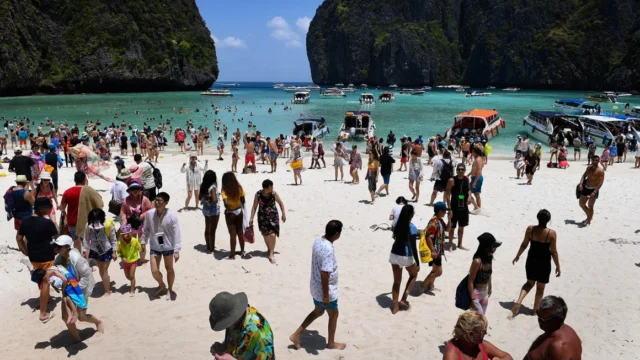Does Off-Season Travel Still Exist? Exploring the Changing Dynamics of Modern Tourism
The Crowded Reality of Modern Travel
Finding a traveler who enjoys crowds and long lines is rare. Yet, these inconveniences are often part of the experience when visiting the world’s most popular attractions during peak times. Historically, budget-conscious travelers could rely on shoulder or low seasons for cheaper rates. For instance, Italy was more affordable in the fall, while Hong Kong was less expensive during its scorching summer months.
The Pandemic’s Impact on Travel Patterns
The pandemic disrupted traditional travel patterns. With many offices and schools switching to remote operations, people found unprecedented opportunities to travel while maintaining their work or studies online. Some companies have continued these remote work policies, allowing workers to explore the world while still earning their paycheck.
The Consequences of Increased Tourism
This surge in tourism has significant impacts. Almost daily, headlines highlight efforts to combat overtourism, including new hotel bans in Amsterdam, photo-blocking barricades in Japan, and mass protests in the Canary Islands. According to the United Nations, global travel is expected to return to pre-pandemic levels in 2024 – and could exceed those numbers.
Is There Still an Off-Season?
Olivier Ponti, a director at ForwardKeys, a travel data and analysis company based in Spain, notes that global travel is becoming increasingly busy. While peak seasons remain crowded, the traditionally low seasons are also seeing more tourists.
Case Study: Popular Beach Destinations
ForwardKeys analyzed data from three of the world’s most popular beach destinations: Thailand, Hawaii, and the Maldives. By dividing the total annual number of tourists by 12, they found that even during low seasons, tourist numbers remain high.
“In Thailand, the low season typically spans from April to September, with April and May being particularly hot,” Ponti explains. “During this period, each month’s tourist volume is still more than 7% of the annual total, indicating minimal seasonality.”
In other words, places like Thailand no longer have a distinct off-season.
The Role of Climate Change
One of the biggest factors influencing peak travel seasons is weather. “Many people assume that low season corresponds to the worst weather,” says Ged Brown, owner of Low Season Traveller. However, climate change is altering these perceptions.
A 2023 survey by the European Travel Commission revealed that European travelers prioritize weather when choosing vacation destinations, with 8% concerned about extreme weather. Southern European countries, like Italy, Spain, and Greece, faced severe heat waves last summer, leading to increased searches for northern European destinations like Denmark and Sweden.

Climate Change and Travel Adaptations
Tour companies are also adapting to these changes. Mikey Sadowski, head of communications at Intrepid Travel, mentions that some popular trips had to be rescheduled or canceled due to climate change. In Nepal, the monsoon season has intensified, melting snow and glaciers faster, making some routes inaccessible.
Beyond Climate: Other Factors Influencing Travel
Weather is not the only consideration for travelers. Many people plan their vacations around school schedules. Families that homeschool their children, known as “worldschooling,” can travel during off-peak times, integrating cultural education with their travels.
Ann Woodward, an American living in Mexico, adjusts her travel plans based on local school schedules to avoid crowds. “I try not to move, be on a plane, or visit tourist attractions during peak periods. I call it hiding,” she jokes.

The Benefits and Drawbacks of High Season Travel
While avoiding peak times can reduce stress and save money, there are benefits to traveling during high season. Some flights and train routes are more frequent or only available during peak season. In less busy regions, shops and restaurants might have limited hours or close entirely when tourist numbers drop.
Finding Joy in Low Season Travel
Ged Brown of Low Season Traveller creates itineraries for those seeking less crowded destinations or a quieter experience at popular spots. “If perfect weather is your main travel goal, you’ll pay a premium and face crowds,” he says. “But there’s joy in discovering the hidden gems of low season travel.”
Conclusion
The concept of off-season travel is becoming increasingly elusive. Climate change, flexible work policies, and evolving travel habits are making traditional low seasons busier. However, savvy travelers can still find quieter, less crowded experiences by planning carefully and exploring less conventional destinations. As the travel landscape continues to change, adapting to these new patterns will be key to enjoying a fulfilling and stress-free journey.











